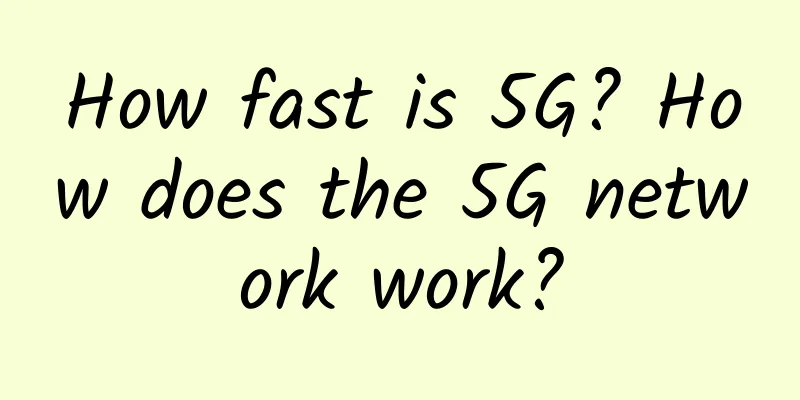Everyone has seen the website 404 error. Do you know why it is 404?

|
Whenever a "404 error" appears when browsing a web page, we all know that this means that there is an access error on the web page, that is, the page is lost. In fact, this has long been common knowledge. As a standard HTTP return code, 404 is used to indicate the response status of the web server HTTP. However, its historical origin is full of mystery and attracts people to explore. In the early 21st century, there was even a group of people who tried to study the source of the "404 error". You only know that "404" is a web page error, but you don't know where it comes from? It is said that before the third technological revolution, the entire Internet was like a large central database set up in a room called 404. At that time, all access requests were completed manually. If the file the requester needed was not found in the database, or if the requester wrote the wrong file number, they would get a "room 404: file not found" return message. In fact, the "404 error" message is usually displayed when the target page is changed, removed, or the client enters the wrong page address. Over time, people have become accustomed to using 404 to represent the error code that the server cannot find the file. Of course, after actual verification, it was found that the legendary room 404 does not exist. In the 3-digit return code of HTTP request, the code starting with 4 represents a client error. In China, "404 error" has more extended meanings, which may mean that the webpage does not exist, the content is illegal, or the content creator has deleted it on his own initiative. In fact, we want to say that although humans have created network technology and it is under our control, it is not completely reliable. In fact, soon after the birth of the Internet, wrong URL access also came along. While we enjoy the knowledge and convenience brought by the Internet, we naturally have to endure the pain brought by 404 errors. Otherwise, how can we say that "everything has two sides". However, Robert Cailliau, the creator of the Internet, disagrees with the above statement about the origin of the "404 error", and even says it is nonsense. The real origin of the 404 error is not like this. Although it seems that this kind of wrong access does not affect the development of the Internet now, it will cause a lot of waste of resources in the early days of Internet construction. In this regard, Cailliau said: "When you write code for a new system, you can't waste too much time detecting requests for wrong address access. Otherwise, the server has to remember too much information and waste too many resources. Modern geeks don't know what it feels like to program with 64K memory! In order to avoid wrong address access, programmers came up with a very simple method, which is to specify the numeric range of error categories, and the '404 error' is set by programmers to let users know where they are wrong when they connect to the network. Marking the user's error type as 404 means that the web page does not exist." "Also, I never expected that people would have this idea about the origin of the '404 error'. Perhaps people prefer some irrational and mysterious stories. Of course, this is quite common among humans. When people have little influence and information spreads slowly, these irrational traits are innocent. But now, due to the existence of the Internet, these characteristics have acquired a dangerous power." Cailliau added. Of course, there are many other HTTP status codes besides 404. For example, 200, which means that the server has successfully processed the request and provided the requested web page, or 301, which means that the requested web page has been completely moved to a new location, and 500, which means that the server encountered an error and could not complete the request, and so on. In the end, what we want to say is that no matter what, HTTP status codes like "404 error" will always exist in the online world. |
<<: Blockchain and what it means for big data
>>: It’s finally here! The first 5G international standard is officially completed and frozen
Recommend
The first version of 5G standards was signed and approved: covering low, medium and high frequencies, mobile phones will be available in 2019
According to Fierce Wireless, 3GPP (a mobile comm...
[11.11] Hostons: VPS hosting annual payment free double hard disk + double traffic
Hosteons launched a "11.11 Promo - DOUBLE Ba...
5G Factory Takes Over the Next Step of "5G+Industrial Internet"
As a product of the deep integration and applicat...
What is Open RAN?
Open RAN is an industry standard designed to powe...
Single-pair Ethernet standard means goodbye to batteries
If you’ve ever spent a Christmas morning with chi...
Will enterprises have dedicated 5G networks in the future?
5G networks bring many benefits to smartphone use...
What Software-Defined LAN Means for Campus Virtualization
Software-defined LAN, or SD-LAN, is the applicati...
V5.NET: Hong Kong CN2 (HKTW-B3) limited 30% off, dual E5-2630L/32GB/1T SSD/10M CN2 monthly payment 625 yuan
V5.NET has announced a special event this month, ...
Internet of Things Development Trend 4 (2019)
Continued from the previous article: "The De...
Tencent Cloud New Year Special Offer: 2C2G4M Cloud Server 30 Yuan/3 Months or 108 Yuan/Year
From February 15th to February 28th, Tencent Clou...
CloudSilk: San Jose triple-network AS4837 line, 2.5Gbps bandwidth, annual payment starting at 160 yuan
CloudSilk.io is a Chinese hosting company founded...
Smart Operation and Maintenance of Large Data Centers is Important
From these data, we can see that how to ensure th...
BuyVM: AMD Ryzen+NVMe high-performance VPS, 1Gbps unlimited traffic, cheap large hard disk (storage block) VPS
During Black Friday, many friends squatted on lar...
spinservers: $69/month - 2*E5-2630Lv2, 64G memory, 1.6TB SSD hard drive, 1Gbps bandwidth, unlimited traffic
spinservers has released a special promotional US...
Manufacturers begin to correct mistakes, is 5G adjusting its direction?
It has been more than two years since the country...









